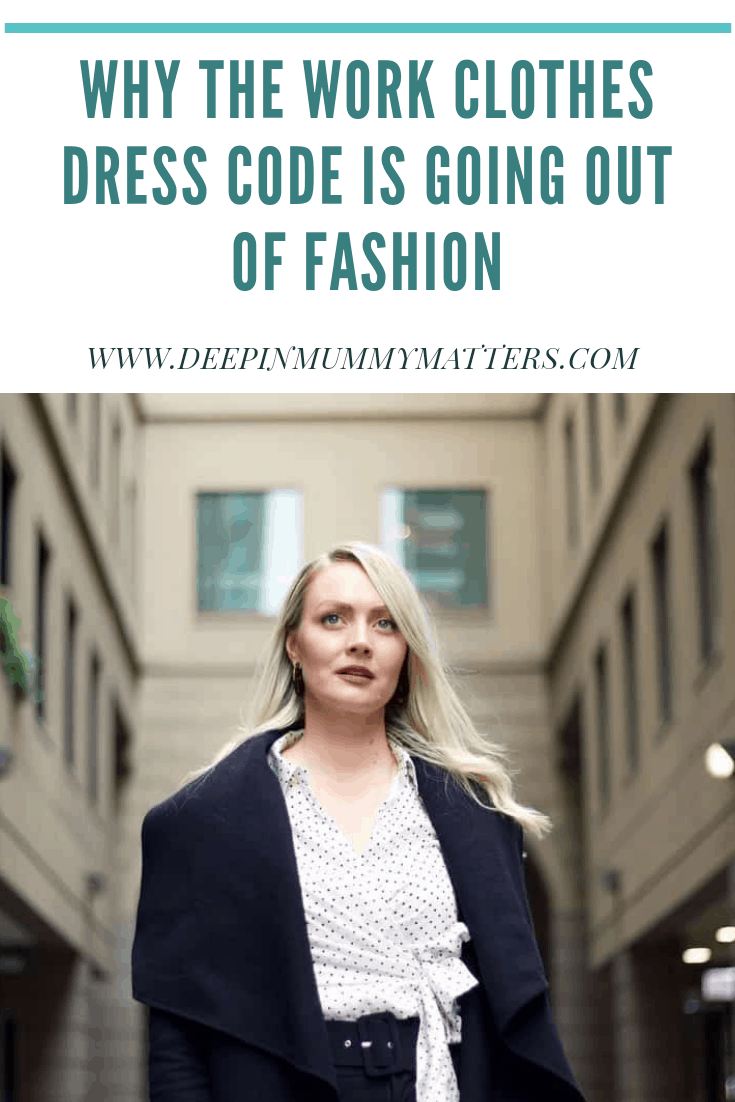Over the decades, wearing “work clothes” to the office has become much less important. But, why is this, and what makes smart casual the new dress code of choice?
Going to work, day in and day out, can be a slog, but there’s one thing that can change this. What you wear when you step out of the house has the power to completely alter your mindset for the day. But how has the world of office wear developed over time?
Back when office jobs were becoming more common, every sector wore smart clothes; it was just the done thing. These days, with priorities within the workplace changing, so are the restrictions on what we wear.
Having a dress code forced upon you doesn’t exactly call for legal advice on your employment rights. That said, it can have a number of drawbacks, which a more relaxed dress code can fix! So, for some idea on the benefits and drawbacks of enforcing a workplace dress code, read on…
What are Work Clothes?

Men and woman who are guided by office dress codes are typically expected to limit their wardrobe to a number of items. So, what exactly can we define as “work wear”? Take a look…
Work Clothes for Men
Men have been in the office workforce for centuries, so their version of work clothes is pretty clearly defined. The general suit of a male worker should include:
- Suit
- Tie
- Shirt
- Smart trousers
- Smart brogues, or similar shoe styles
Note: In certain industries, there is Personal Protective Equipment (PPE) which include a mens work trouser, shirt or jacket for specific safety reasons.
Work Clothes for Women
Women have really only been welcome in an office environment for the past century or so. Considering the social implications of their position, it was important for women to make an impression on their predominantly male co-workers.
So, smart wear was deemed most appropriate, in order to be taken seriously. This included, and still does include, clothes such as:
- High heels
- Skirts
- Tights
- Smart trousers
- Smart button-up shirts
- Tailored work dresses
The Benefits of Wearing Work Clothes
Back in the day, work clothes were what was expected of the work force. This is probably down to the fact that formality during earlier centuries was deemed to be socially acceptable. What’s more, commercial fashion wasn’t so easily accessible as it is today.
With this in mind, and the world having changed an awful lot since then, why are we still wearing smart clothes to work in the modern era? Well, we can’t deny that there are some benefits to it still, including…
1. Providing a Good First Impression
Humans are, unfortunately, judgemental by nature. This means that, depending on the environment, your professionalism could be judged by your attire.
Obviously, it can’t be stressed enough that this completely depends on the sector. That said, if a suit is the done thing, then heading to an important meeting wearing trainers and jeans, won’t send the best message.

2. Helps you to Get Your Game Face On
For many, heading to work in smart clothes could really affect their workplace attitude. Rolling out of bed, showering, doing hair and makeup, and then popping on a power suit, could make or break that day’s work.
Maybe you have a big sale to make today, or a big client meeting; that power suit could change the outcome completely. It’s amazing what clothes can do in these situations.
3. Promotes a Team Spirit
Wearing an office uniform or dress code can create a sense of unity between co-workers. With everyone wearing smart clothes, you can all feel like part of a team, no matter what area of the business you fit into. This way, there’s less segregation between, for example, the marketing and sales teams.
8 Reasons Why the Attitude to Work Clothes has Changed
Despite these positives, attitudes are now changing towards work clothes. We no longer live in such a formal society, and equality and acceptance within the workplace, and life in general, has become the norm.
Because of all this, being more flexible with work dress codes is now more and more normal. There are a huge number of benefits to taking a more relaxed approach, including:
1. Improved Comfort
It goes without saying that smart clothes aren’t really the most comfortable of clothing. As a working society, we spend the majority of our lifetimes at our desks, which is why being comfortable is so important. After all, if you’re constantly thinking about how tight your shirt collar feels, or how much your feet hurt, your brain will not be in the game.
2. Promotes Individuality
For many, clothes are one of the main ways people are able to express themselves. Restricting what someone wears can make an employee feel as though they’re being stripped of their individuality, which is such an important element of any workforce.
There’s often a preconception that visiting clients want to see suits and heels. That said, you may be surprised that seeing the expression of personalities through clothes could have the opposite effect. After all, we’re all humans; your clients aren’t the robots you might think they are.
By allowing workers to dress how they wish – obviously in an appropriate way – this can help to create a relaxed atmosphere. It can also allow peoples’ personalities to shine, which can make the office environment feel quirky and fun.
3. Can Dress for Your Role

These days, the variety of job roles one can take up means a suit or a skirt and heels just doesn’t cover every career type. For example, if you’re a computer genius tucked away in the corner of the office, you just want to be comfortable. Or, you might be a marketing creative with a quirky personality, and being restricted by smart wear just makes no sense.
For many job roles, especially if they aren’t client-facing, it’s completely unnecessary to head to work in a suit. Perhaps, on some days, you might feel like it to help you get a certain task done. But, in many cases, it could have the completely opposite effect if enforced as a rule.
4. Promotes an Atmosphere of Trust
The way you treat your employees has a massive impact on how they perform. By restricting what people can wear to work, it could promote a sour atmosphere.
We’re all adults and should be able to judge what is appropriate for the office. So, by providing the freedom to do this, you’re showing you trust your employees’ judgement.
5. Lower Cost
Smart clothes, especially suits for men, can cost a fortune. In fact, the average price for a good suit could be around the region of £500-600!
Wearing a suit every day requires at least 3 or 4 to get started. So, for those who may be in a low-paying job, this could become too much to afford.
Imagine entering a job off the bat, and having to fork out £1000s just to ensure you could dress appropriately for your first week! It could be a little too much to ask of an employee, causing stress and anxiety along the way.
6. Doesn’t Enforce Strict Gender Roles
It may, or may not, surprise you to learn that employees across the UK view work clothes and gender to be intrinsically linked. In fact, common dress code criteria, even now, involves women wearing heels and men donning a tie.
It’s clear that there is an inherent link behind work attire and defined gender roles. By allowing people to dress a little bit more casual, they have the freedom to avoid these predefined identities.
7. Keeps Mornings Relaxed

Getting up for work is tiring, and often stressful enough, especially when you have kids or pets to take care of. The pressure of getting to work on time and finding a clean suit to wear, whilst juggling everything else, could become too much. Without having the stress of what to wear each morning, this can help to create a more positive morning routine.
8. Increases Employee Satisfaction and Productivity
All the benefits above end up with one major positive; improving employee satisfaction and, thus, productivity. We’ve seen that a dress code can cause employees to feel restricted and stressed, and reduce their sense of identity. In removing these restraints, you can ensure your employees are happy, comfortable, relaxed, and that they want to come to work each day.
Smart Casual: the Work Clothes Compromise?
We can’t deny that there are clear benefits and drawbacks to each case; whether you wear smart clothes or jeans and a T-shirt. This is why many companies are adopting a smart-casual office attire, which provides a little bit of flexibility.
By adopting this flexible “uniform”, employees are able to interpret the dress code as they wish, and dress how they feel for that particular day. With 61 per cent of people saying their productivity increases with a more relaxed dress code, I think the stats speak for themselves.
What do you think of the changing attitudes to work clothes? Do you feel more ready for the workday when you’re wearing your power suit? Or, do you get more work done when you’re donning your trainers and a crop top? Let me know in the comments below, and let’s get debating!

